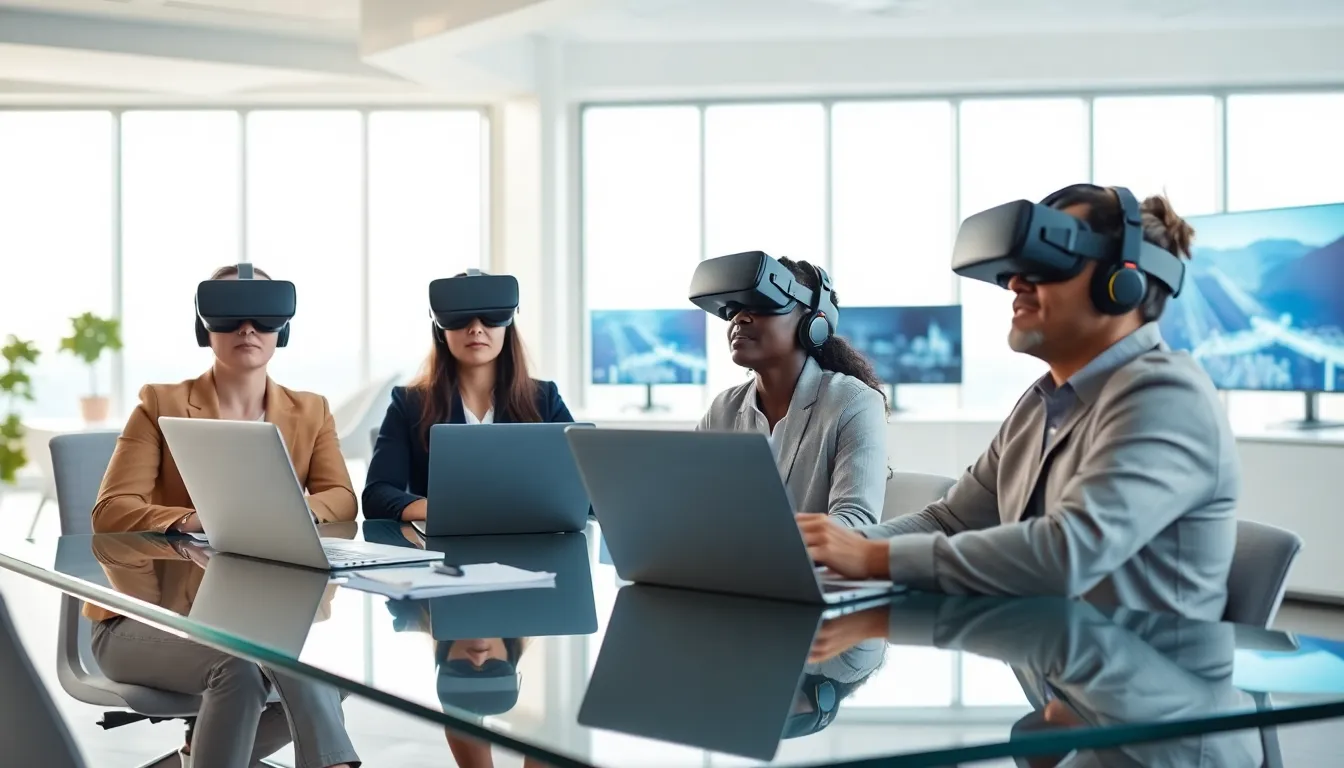Virtual reality applications are revolutionizing the way we experience everything from gaming to healthcare. Imagine slipping on a headset and being transported to a captivating world where anything is possible, almost like stepping into a sci-fi movie, minus the intergalactic aliens… for now. As we investigate deeper into this fascinating tech frontier, it’s clear that virtual reality isn’t just a novelty: it’s set to transform various industries, making tasks more engaging, efficient, and sometimes just downright fun. So, grab your virtual goggles, and let’s explore the extraordinary landscape of virtual reality applications.
Table of Contents
ToggleOverview of Virtual Reality

Virtual reality (VR) refers to a simulated experience that replicates real or imagined environments, allowing users to immerse themselves in 3D spaces. This technology uses headsets, computers, and various sensory equipment to create a realistic experience. VR can be categorized into two main types: non-immersive experiences, where users interact with a virtual space on screens, and immersive experiences, which require dedicated headsets that envelop the user in a 360-degree world. The goal of VR is to provide a sensory experience that can be indistinguishable from reality, whether for entertainment, training, or therapeutic purposes.
Types of Virtual Reality Applications
Virtual reality has found its way into multiple realms, enhancing experiences and changing how tasks are performed. Here are some key applications of this immersive technology:
Entertainment and Gaming
VR gaming takes immersion to the next level, allowing players to become part of the action. The popular title “Beat Saber” exemplifies this trend, where you slice through blocks to the rhythm of the music. Different genres, from fantasy explorations to realistic simulations, provide gamers with unparalleled experiences and challenges that traditional consoles simply can’t match.
Education and Training
In educational settings, VR offers an interactive approach to learning. Imagine medical students practicing surgery in a risk-free environment or history students walking through ancient civilizations. The hands-on experience helps students grasp complex concepts more effectively.
Healthcare and Therapy
In healthcare, VR applications are being used for therapy and rehabilitation. Patients can undergo exposure therapy for phobias or use VR to distract them during painful procedures. Studies also show that virtual reality can positively affect mental health, providing therapeutic environments for relaxation and mindfulness.
Real Estate and Architecture
For real estate agents and architects, VR allows clients to tour properties without leaving their homes. Virtual walkthroughs enable potential buyers to visualize spaces and layouts, making it easier to make informed decisions. Architects can also use VR for design validation and to showcase their ideas to clients before construction begins.
Benefits of Virtual Reality Applications
The advantages of incorporating virtual reality applications are manifold. For one, the immersive experience fosters better engagement, whether in a classroom or a virtual meeting. Users tend to retain information more effectively when they can see and interact with it. Also, VR can simulate real-life scenarios, providing hands-on experience in a safe environment. The applications in physical rehabilitation not only aid recovery but also enhance motivation through gamification. Besides, accessibility improves: users can experience environments they may not be able to access physically, so breaking down barriers.
Challenges and Limitations
Even though its many benefits, virtual reality applications face challenges and limitations. High-quality VR systems can be expensive, and not everyone has access to the latest technology. Also, some users may experience discomfort or motion sickness while using VR, limiting its usability. Content creation also poses a significant hurdle: developing high-quality, engaging applications requires significant investment and technical expertise. Finally, concerns around privacy and data security in virtual environments need to be addressed to foster user trust.
Future Trends in Virtual Reality
The future of virtual reality applications holds promise with rapidly evolving technology. Advancements in hardware and software are expected to enhance user experiences further. AI integration could create more adaptive and personalized VR environments, enhancing engagement and interactivity. Also, the rise of the metaverse suggests a compelling vision where virtual interactions replicate social engagement, enabling people to connect in new ways. Industries will likely continue to explore and embrace VR to reshape how users interact with content and each other.


